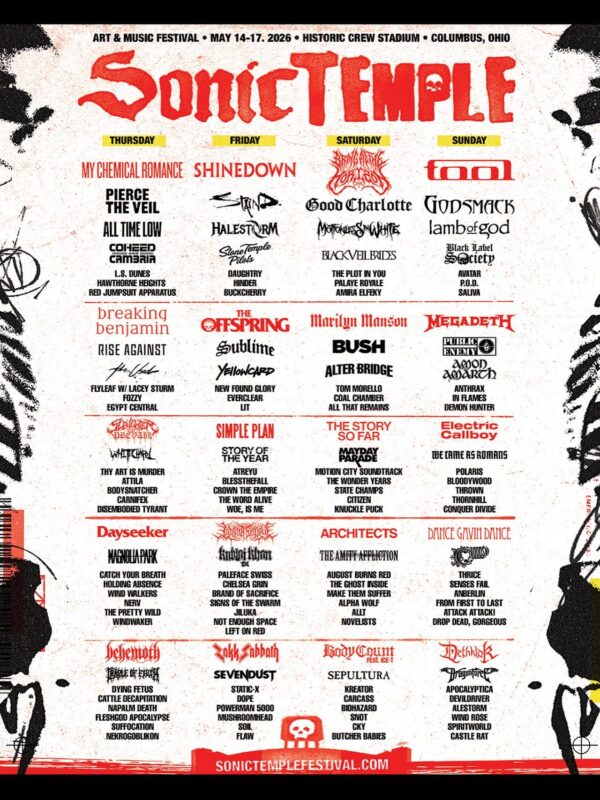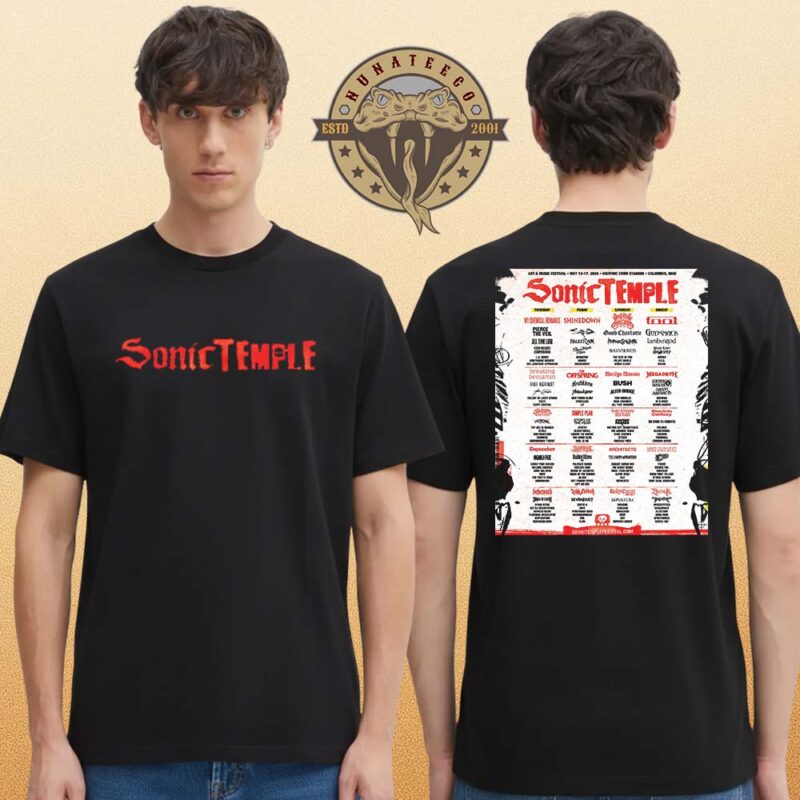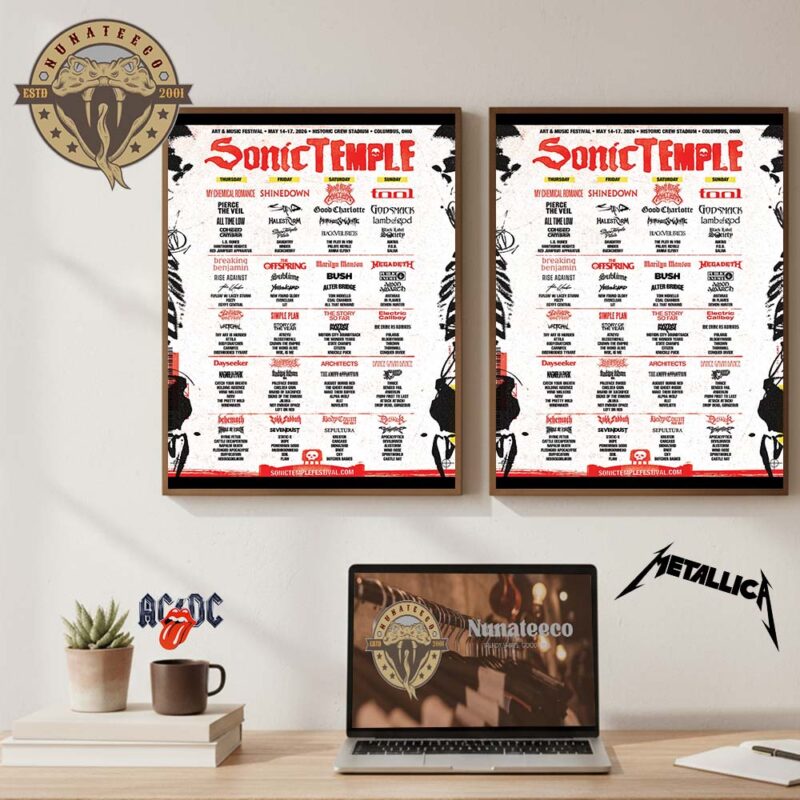News
Sonic Temple 2026: Columbus, Ohio Prepares for the Return of Rock’s Most Explosive Festival

Every May, the heart of Ohio begins to pulse a little louder. The sound of tuning guitars, pounding drums, and roaring crowds echoes through Columbus — signaling the arrival of Sonic Temple Art & Music Festival, one of North America’s most celebrated rock gatherings. In 2026, the festival returns to Historic Crew Stadium from May 14–17, promising an explosive lineup that bridges generations of rock legends and rising acts.
This year’s edition is more than just another weekend of live music — it’s a cultural revival. As the world of rock evolves, Sonic Temple remains a cornerstone of authenticity, creativity, and rebellion. Whether you’re a lifelong fan of classic metal or a newcomer drawn to the festival’s electrifying atmosphere, 2026’s lineup guarantees something for everyone.
The Legacy of Sonic Temple
Launched in 2019 as the successor to the legendary Rock on the Range, the Sonic Temple Festival quickly cemented itself as one of the premier music festivals in the U.S. Known for its raw sound, intense performances, and loyal fanbase, it became a pilgrimage site for rock and metal devotees.
From its early days hosting acts like Foo Fighters, System of a Down, Tool, and Slipknot, Sonic Temple has continued to evolve — maintaining its identity as a haven for loud, unapologetic music. Even during its brief pandemic hiatus, fans kept the spirit alive through livestreams and community-driven events. Now, as it enters another monumental year, Sonic Temple stands as a symbol of endurance, passion, and unity in the rock world.
The 2026 Lineup: Power, Passion, and Pure Noise
The Sonic Temple 2026 lineup reflects the festival’s signature balance of old-school legends and modern innovators. Headliners include Metallica, Foo Fighters, Bring Me The Horizon, and Queens of the Stone Age — four titans representing different eras of rock evolution.
Joining them are Avenged Sevenfold, Ghost, The Pretty Reckless, Architects, and Royal Blood, each bringing their own brand of high-energy sound. For fans of alternative and punk, the festival introduces performances by Paramore, Turnstile, and Yungblud, signaling Sonic Temple’s ongoing embrace of rock’s next generation.
Rounding out the four-day event are special collaborative sets — surprise guest appearances and tributes to icons who shaped rock’s legacy. Every night, Historic Crew Stadium will transform into a thunderous cathedral of sound, with pyrotechnics, visuals, and light shows that elevate every performance into an unforgettable experience.

The Venue: Historic Crew Stadium
The Historic Crew Stadium isn’t just a concert venue — it’s a cultural landmark. Originally built as the first soccer-specific stadium in the U.S., it has since become synonymous with Ohio’s biggest music moments. Its open design, massive capacity, and acoustic-friendly layout make it ideal for large-scale festivals.
Sonic Temple uses every inch of the venue — from the main stage to intimate side platforms, VIP lounges, and art installations that blend music with creativity. Food trucks, local craft beer tents, and merch booths create an immersive festival city within Columbus. For four days, it’s a place where guitars reign supreme and every fan feels part of something historic.
A Celebration Beyond Music
Sonic Temple isn’t just about live performances; it’s an entire culture. The festival grounds feature art exhibitions, tattoo booths, nonprofit activations, and fan meetups that reflect the diversity and inclusivity of the rock community. Fans from all over the world gather not only to watch their favorite bands but to connect with others who share the same pulse for heavy riffs and rebellion.
This sense of belonging sets Sonic Temple apart from other festivals. Whether you’re moshing in front of the stage or relaxing in the grass between sets, there’s an unspoken camaraderie that defines the event. In many ways, Sonic Temple is less about the headliners and more about the people who come to celebrate them.
The Evolution of Rock Festivals
In an era dominated by pop and electronic music, Sonic Temple stands as a defiant reminder of rock’s resilience. While Coachella and Lollapalooza have diversified their lineups to attract wider audiences, Sonic Temple continues to stay loyal to its roots — amplifying rock in all its forms: alternative, punk, grunge, and metal.
That authenticity keeps it relevant. By giving space to both established icons and underground acts, the festival ensures the future of rock remains vibrant. Sonic Temple 2026 captures that spirit — an intergenerational conversation between artists who paved the way and those redefining the sound.

Fans and the Sonic Temple Experience
Ask any fan who’s attended before, and they’ll tell you: Sonic Temple isn’t just an event — it’s a pilgrimage. People fly in from across the U.S., Canada, and Europe, some camping nearby, others tailgating hours before the gates open. From the first guitar feedback to the closing fireworks, the atmosphere is pure adrenaline.
Social media floods with photos, stories, and videos that immortalize each edition. Hashtags like #SonicTemple2026 and #ColumbusRocks trend for days as fans trade memories and moments. The emotional connection between fans and the festival makes every year feel personal — like returning to a sacred ground of noise and nostalgia.
The Economic and Cultural Impact
Sonic Temple also plays a vital role in Columbus’s local economy. Each year, it attracts tens of thousands of visitors, boosting hotel occupancy, restaurant traffic, and small businesses. The city has fully embraced the festival, often collaborating with local artists and vendors to enhance the experience.
Culturally, it reaffirms Columbus’s place as a music hub. From hosting underground punk shows in the 1980s to welcoming today’s biggest rock acts, the city’s relationship with live music continues to thrive. Sonic Temple 2026 promises to push that legacy even further, blending Ohio’s heritage with the global language of rock.
The Sound of 2026: A New Era
This year’s festival reflects the changing tides of modern rock. Genres are blending, artists are experimenting, and fans are more open-minded than ever. Metallica’s legacy performance shares the stage with Bring Me The Horizon’s futuristic metalcore, while Paramore brings emotional alt-pop energy.
Sonic Temple 2026 celebrates this evolution, showing that rock is far from dead — it’s alive, adaptive, and louder than ever. Each act contributes to a shared narrative of resilience, unity, and reinvention.
Sustainability and Future Vision
As global festivals face environmental challenges, Sonic Temple has made conscious steps toward sustainability. The 2026 edition introduces eco-friendly initiatives: reusable cups, recycling stations, solar-powered lighting, and partnerships with green nonprofits. The goal is to ensure that the music’s legacy doesn’t come at the planet’s expense.
This shift marks a new chapter in festival culture — one where celebration and responsibility coexist. For Sonic Temple, it’s not just about turning up the volume; it’s about setting an example for the next generation of fans and organizers.
Looking Ahead
As anticipation builds for the 2026 kickoff, fans are already marking calendars and revisiting memories from past editions. Each Sonic Temple feels like a reunion — a yearly reminder that rock’s heartbeat still echoes loud and proud.
When the gates of Historic Crew Stadium open this May, it won’t just be the start of another music festival. It will be a return to form, a collective roar of defiance, and a love letter to the art that refuses to fade.
>>>Enjoy shopping at Nunateeco
